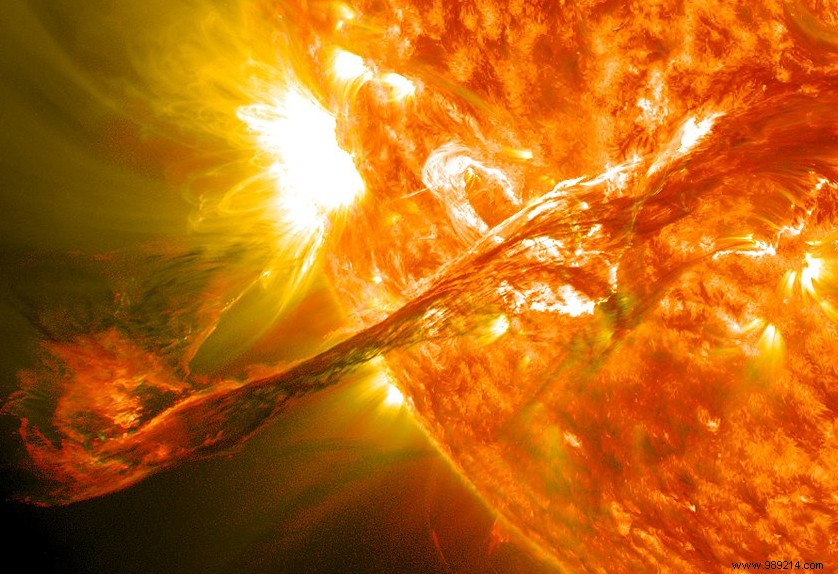Less than a year ago, NASA announced that the Sun had begun a new cycle of activity. For eleven years, it will be about major solar flares. However, these could harm our technological world, because their magnitude is still quite difficult to imagine.
The media often talk about global warming and various natural or technological disasters. Yet another threat looms, and this one rarely makes the headlines:solar flares. In September 2020, the US Space Agency (NASA) claimed that the Sun had begun its 25th cycle of activity, synonymous with eleven years of major eruptions. According to the researchers, the activity of the Sun is gradually increasing and will likely peak in the middle of the year 2025.
Magnetic storms are a phenomenon linked to variations in solar activity, and therefore solar flares. However, these variations generate sudden and intense fluctuations of the terrestrial magnetism. As Bloomberg explains in an article from May 22, 2021, magnetic storms have already occurred in the near past.
The most powerful magnetic storm is none other than the Carrington Event, which in 1859 destroyed a large amount of stratospheric ozone . This event had also caused an electrical overload at the level of the telegraph networks of North America. Some operators had observed fires in stations as well as electrocutions. In March 1989, another solar flare propelled a jet of material as large as 36 times the size of the Earth , at a speed of 1.6 million km/h. In Quebec, no less than 6 million people were left without electricity for nine hours.

Today, the world is completely dependent on different technologies and other satellites whose mission is to regulate every aspect of human daily life . As far as energy is concerned, the chaos in which Texas was plunged last winter is a source of questioning. Satellites orbiting the Earth – including those belonging to the Global Positioning System (GPS) – are vulnerable to solar flares. This is also the case for electrical appliances of all kinds, radio waves as well as for aircraft crews. Indeed, pilots expose themselves to cataracts, in other words the partial (or total) opacification of the lens of the eye.
About every century and a half, the Earth experiences a very large solar flare. However, the world could experience real chaos during this next episode. In 2017, a study by the American Geophysical Union (AGU) estimated 66% the part of the American population that could suffer the consequences of such an event. Moreover, the economic cost could exceed $40 billion per day.
You should know that specialists in the matter follow solar flares in real time. However, their dangerousness and their nature can only be known if they reach specialized satellites, which are located about a million km from the Earth . However, when storms reach these satellites, there are between one and one and a half hours before they reach our planet. In other words, it is almost impossible to prepare for it.